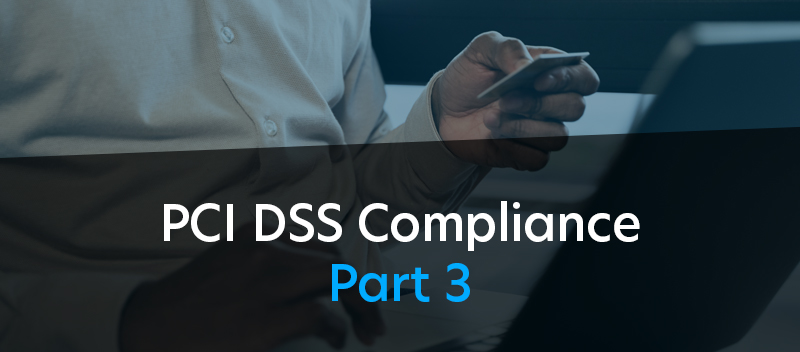Blog PCI DSS Compliance Costs: A Comprehensive Guide for Businesses of All Sizes: Part 3
PCI DSS Compliance Costs: A Comprehensive Guide for Businesses of All Sizes: Part 3

The Payment Card Industry Data Security Standard (PCI DSS) is a set of security standards designed to ensure that all companies processing, storing, or transmitting credit card information maintain a secure environment. Compliance with PCI DSS is not just a regulatory requirement but a critical step in safeguarding customer data and maintaining trust.
For businesses of all sizes, understanding and adhering to these standards is essential to avoid costly breaches, fines, and reputational damage. This guide will provide a comprehensive overview of the costs associated with PCI DSS compliance, helping you budget effectively while protecting your data.
PCI DSS Compliance Levels
When it comes to PCI DSS compliance, not all businesses are treated the same. The level of compliance required depends on how many credit card transactions your business processes each year. Let’s break down the four merchant levels and what they mean:
Merchant Levels
Level 1:
- Who: Businesses processing over 6 million Visa transactions annually.
Level 2:
- Who: Businesses processing between 1 and 6 million Visa transactions annually.
Level 3:
- Who: Businesses processing 20,000 to 1 million e-commerce transactions annually.
Level 4:
- Who: Businesses processing fewer than 20,000 e-commerce transactions or any other smaller volume of transactions.
Each level has specific requirements that must be met to ensure compliance and protect customer data. Understanding where your business falls can help you better prepare for the necessary steps to achieve PCI DSS compliance.
For more on our PCI DSS services, Click Here
Cost Factors Influencing PCI DSS Compliance
Understanding the costs associated with PCI DSS compliance can help you budget effectively and avoid surprises. Several factors influence these costs, including your business’s size, complexity, and existing security measures. Here’s a closer look:
1. Business Size and Complexity
The larger and more complex your business, the higher the costs for achieving PCI DSS compliance. Factors that contribute to increased costs include:
- Number of transactions: More transactions typically mean stricter compliance requirements.
- Multiple locations: Businesses with several physical or online locations need to ensure consistent security measures across all sites.
- Variety of payment methods: Handling different types of payments (e.g., online, in-store) can add complexity to compliance efforts.
- Multiple technologies: Businesses with different types of IT systems need to ensure consistent security measures across all technologies.
2. Current Security Posture
Your existing security infrastructure plays a significant role in determining compliance costs. Consider the following:
- Existing security measures: If your current security practices are robust, you may need fewer upgrades to meet PCI DSS standards.
- Gaps in compliance: Identifying and addressing security gaps can involve significant investment in technology and policy changes.
3. In-house Expertise vs. External Consultants
The decision to handle compliance internally or hire external consultants can impact costs:
- In-house team: Leveraging your internal IT and security teams might reduce costs, but only if they possess the necessary expertise.
- External consultants: Hiring specialists can be a bit more costly but ensures you benefit from their experience and knowledge in navigating PCI DSS requirements.
4. Scope of Cardholder Data Environment (CDE)
The scope of your Cardholder Data Environment (CDE) directly affects compliance costs. Key considerations include:
- Size of the CDE: Larger environments require more extensive assessments and security measures.
- Segmentation: Properly segmenting your CDE from the rest of your network can reduce the scope and cost of compliance efforts.
- Data storage practices: Minimizing the amount of cardholder data stored can simplify compliance and reduce costs.
- Security measures: Amount of security tools and processes involved in protection of the CDE.
Detailed Cost Breakdown by Business Size
Achieving PCI DSS compliance involves various costs, which can vary significantly based on the size of your business. Below are rough estimates for large enterprises, medium-sized businesses, and small businesses:
1. Large Enterprises (Level 1 Merchants)
— Preparation Costs:
- Training and policy development: Around $5,000
— Assessment Costs (including QSA fees):
- Onsite audit: Approximately $40,000
- Vulnerability scans: Around $1,000
- Penetration testing: Around $15,000
— Remediation Costs:
- Software and hardware updates: Varies greatly, from $10,000 to $500,000 depending on the scope of work needed to achieve compliance and security
— Maintenance Costs:
- Ongoing monitoring and staffing: Typically included in internal operational budgets but can vary widely based on specific enterprise needs and environments
2. Medium-sized Businesses (Level 2 Merchants)
— Preparation Costs:
- Training and policy development: Estimated around $2,500
— Assessment Costs:
- Self-assessment questionnaires: Often minimal direct cost but includes staff time
- External scans: Approximately $500 – $2,500 annually
— Remediation Costs:
- Addressing gaps: Can vary widely, typically from $5,000 to $50,000, depending on the scope of necessary changes
— Maintenance Costs:
- Regular audits: Estimated at $2,500 – $7,500 annually
- Security tools: Approximately $2,500 – $10,000 annually
3. Small Businesses (Level 3 and 4 Merchants)
— Preparation Costs:
- Training and policy development: Around $70 per employee
— Self-assessment Costs:
- Self-Assessment Questionnaire: $50 – $200
- Vulnerability scanning: Around $100 – $200 per IP address
— Remediation Costs:
- Software and hardware updates: Varies widely, from $100 to $10,000 based on the extent of work required
— Maintenance Costs:
- Periodic reviews and basic monitoring tools: Typically around $300 per year, depending on the environment
By understanding these cost factors, businesses of all sizes can better prepare financially for achieving and maintaining PCI DSS compliance.
Key Components of PCI DSS Compliance Costs
1. Network Security Measures
Implementing robust network security measures is essential. This includes firewalls, intrusion detection and prevention systems, and secure network architecture.
2. Data Encryption
Encrypting sensitive data both in transit and at rest is crucial for PCI DSS compliance. The costs for encryption solutions are based on the volume of data and the level of encryption required.
3. Vulnerability Scanning and Penetration Testing
Regular vulnerability scans and penetration tests help identify and fix security weaknesses. Annual costs can be based per IP address for vulnerability scans and comprehensive penetration testing.
4. Employee Training
Training employees on data security practices and PCI DSS requirements is vital. Training costs will be based on the number of employees.
5. Policy Development and Documentation
Developing and maintaining security policies and documentation is a continuous effort. Initial policy development can have additional expenses due annual updates but costing less.
6. Annual Reassessments
Annual reassessments ensure ongoing compliance. Onsite audits for large enterprises can cost more, while smaller businesses may spend significantly less on self-assessment questionnaires and external scans.
Cost-Saving Strategies for PCI DSS Compliance
1. Network Segmentation
Segmenting your network can help reduce the scope of PCI DSS compliance. One way to lower overall expenses is to reduce the number of systems that need to be compliant is to isolate cardholder data environments from other network segments.
2. Cloud-based Solutions
Adopting cloud-based solutions can offer significant cost savings. Many cloud service providers offer PCI-compliant services, which can reduce the need for expensive hardware and dedicated on-site security measures.
3. Automated Compliance Tools
Investing in automated compliance tools can streamline the compliance process. These tools can perform regular scans, monitor security controls, and generate compliance reports, saving both time and labor costs.
4. Outsourcing to Compliant Service Providers
Outsourcing certain functions to service providers that are already PCI-compliant can be a cost-effective strategy. This allows businesses to leverage the expertise and infrastructure of specialized vendors, minimizing the need for in-house resources.
ROI of PCI DSS Compliance
1. Cost of Non-Compliance (Fines and Penalties)
Failing to comply with PCI DSS can result in substantial fines and penalties, ranging from $5,000 to $100,000 per month until compliance is achieved. Noncompliance might lead to increased transaction expenses or perhaps the incapacity to receive credit card payments.
2. Data Breach Prevention and Associated Savings
PCI DSS compliance significantly reduces the risk of data breaches, which can be extremely costly. The average cost of a data breach can exceed $3.86 million, including expenses related to notification, legal fees, and loss of business. By preventing breaches, businesses can save these substantial costs.
3. Enhanced Customer Trust and Brand Reputation
Achieving PCI DSS compliance enhances customer trust and protects brand reputation. Consumers are more inclined to do business with organizations that value data security, which might result in more revenue and more devoted customers.
Budgeting for PCI DSS Compliance
Effectively budgeting for PCI DSS compliance involves understanding the various costs associated with initial implementation and ongoing maintenance. Here are key considerations to help you plan accurately.
Initial vs. Ongoing Costs
-
- Initial Costs: These include expenses like infrastructure upgrades, initial training, policy development, and one-time assessments. Depending on business size, initial costs can range from a few thousand to several hundred thousand dollars.
- Ongoing Costs: These entail regular vulnerability scans, employee training refreshers, annual audits, and system maintenance. Ongoing costs are generally lower than initial costs but necessary for sustained compliance.
Tips for Accurate Cost Estimation
-
- Conduct a Gap Analysis: Identify current compliance gaps to estimate remediation efforts.
- Engage Experts: Consult with Qualified Security Assessors (QSAs) like TrustNet for precise cost insights.
- Itemize Expenses: Break down costs into specific categories like software, hardware, training, and assessments to avoid underestimation.
Long-term Planning Considerations
-
- Allocating a Contingency Budget: Set aside funds for unforeseen compliance-related expenses.
- Regular Updates: Budget for technology updates and policy revisions to stay current with evolving PCI DSS requirements.
- Continuous Monitoring: Invest in automated tools for ongoing monitoring to ensure continuous compliance.
The True Value of PCI DSS Compliance
The ROI of PCI DSS compliance extends beyond mere adherence to regulations. It includes avoiding hefty fines, preventing costly data breaches, and enhancing customer trust and brand reputation. Budgeting effectively by distinguishing between initial and ongoing costs, accurately estimating expenses, and planning for the long term ensures sustainable compliance.
Viewing PCI DSS compliance as an investment rather than a cost is crucial. It not only safeguards your business but also positions it for growth and success in a digital economy where data security is paramount.
Enhance your PCI DSS compliance strategy with expert guidance from TrustNet. Contact Our Experts today.




